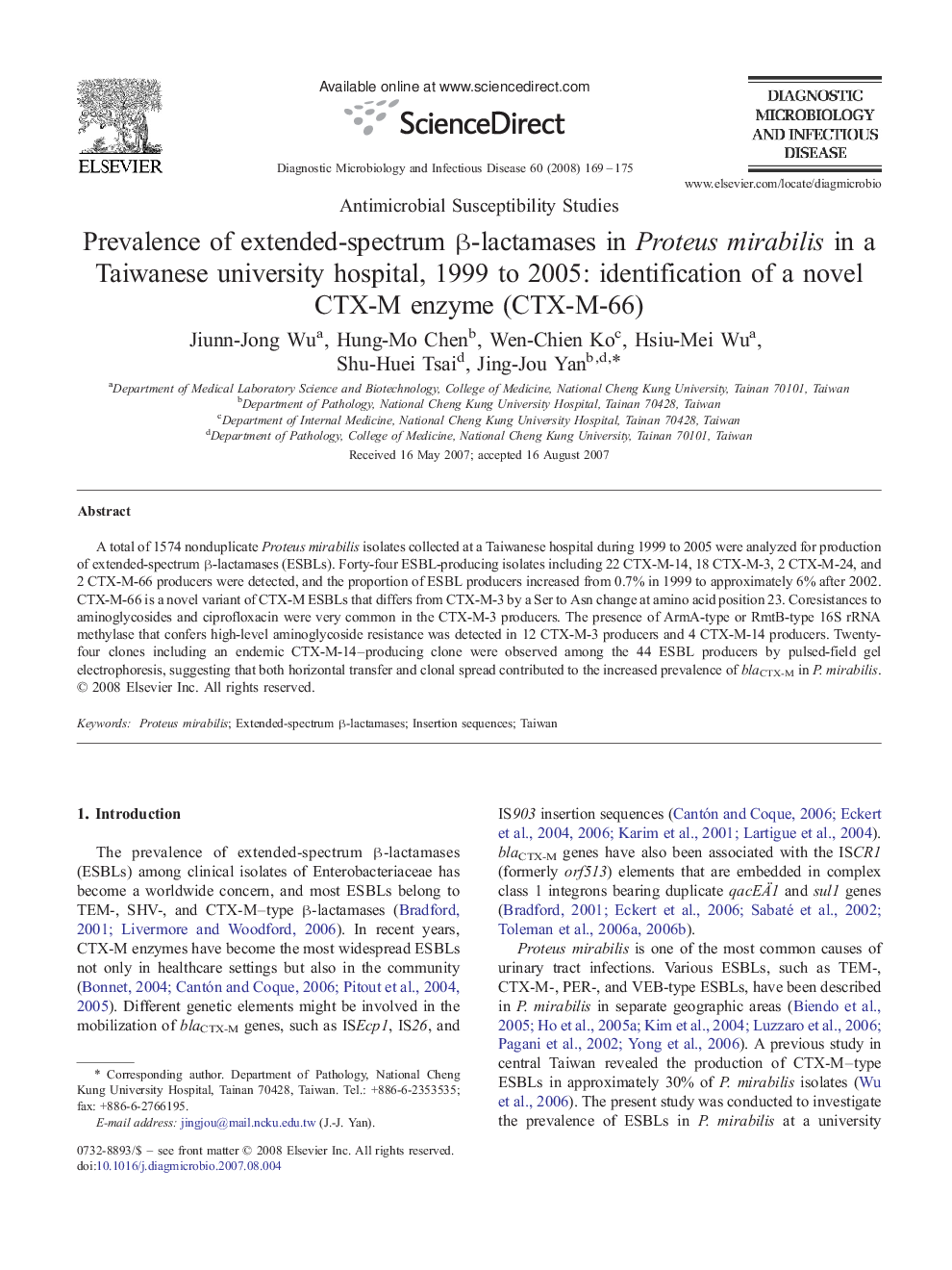| Article ID | Journal | Published Year | Pages | File Type |
|---|---|---|---|---|
| 3348686 | Diagnostic Microbiology and Infectious Disease | 2008 | 7 Pages |
A total of 1574 nonduplicate Proteus mirabilis isolates collected at a Taiwanese hospital during 1999 to 2005 were analyzed for production of extended-spectrum β-lactamases (ESBLs). Forty-four ESBL-producing isolates including 22 CTX-M-14, 18 CTX-M-3, 2 CTX-M-24, and 2 CTX-M-66 producers were detected, and the proportion of ESBL producers increased from 0.7% in 1999 to approximately 6% after 2002. CTX-M-66 is a novel variant of CTX-M ESBLs that differs from CTX-M-3 by a Ser to Asn change at amino acid position 23. Coresistances to aminoglycosides and ciprofloxacin were very common in the CTX-M-3 producers. The presence of ArmA-type or RmtB-type 16S rRNA methylase that confers high-level aminoglycoside resistance was detected in 12 CTX-M-3 producers and 4 CTX-M-14 producers. Twenty-four clones including an endemic CTX-M-14–producing clone were observed among the 44 ESBL producers by pulsed-field gel electrophoresis, suggesting that both horizontal transfer and clonal spread contributed to the increased prevalence of blaCTX-M in P. mirabilis.
